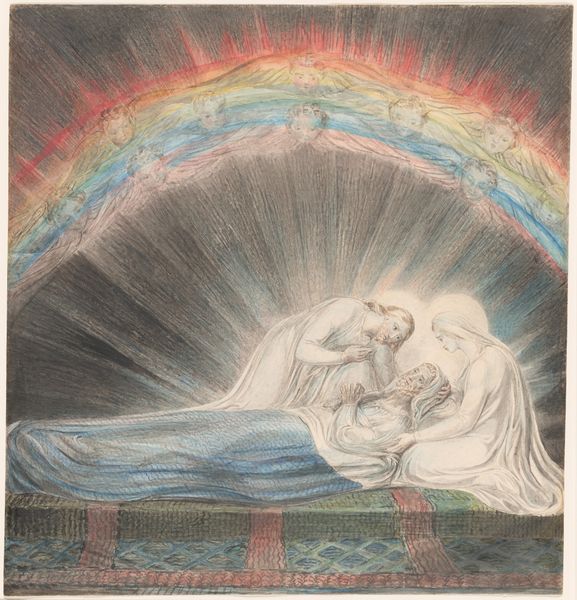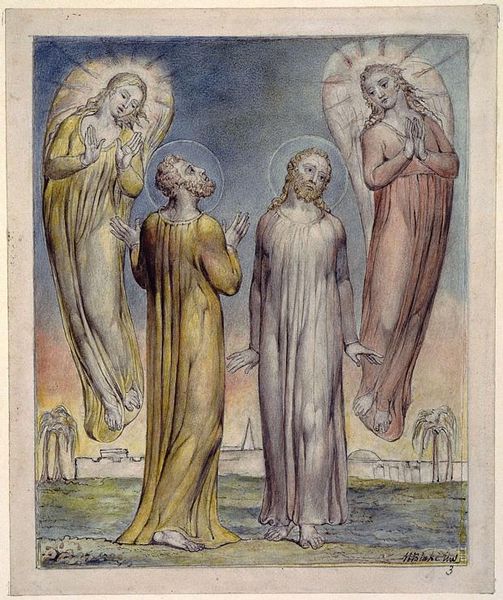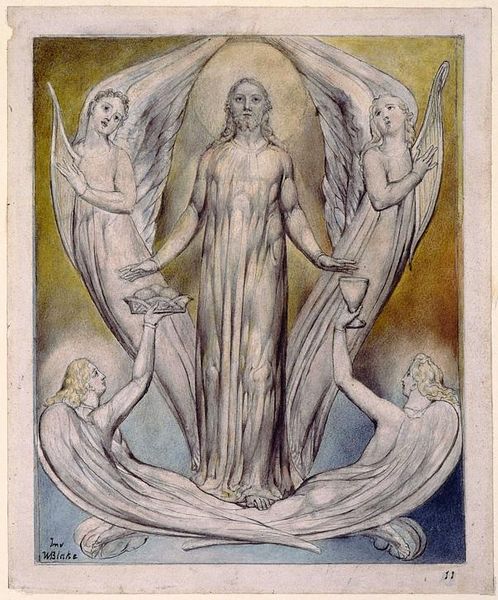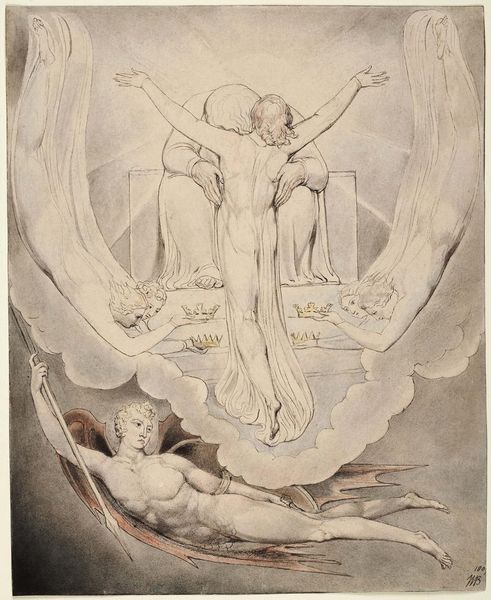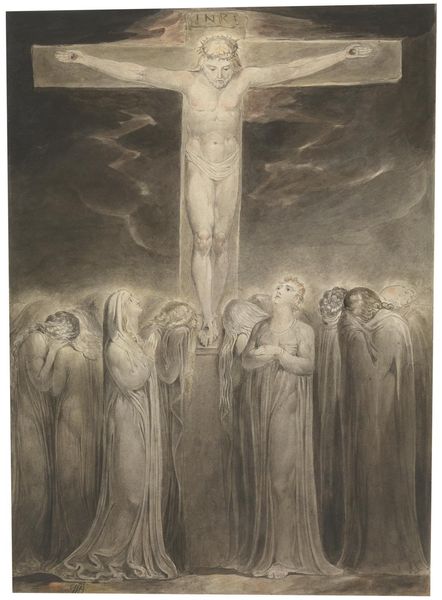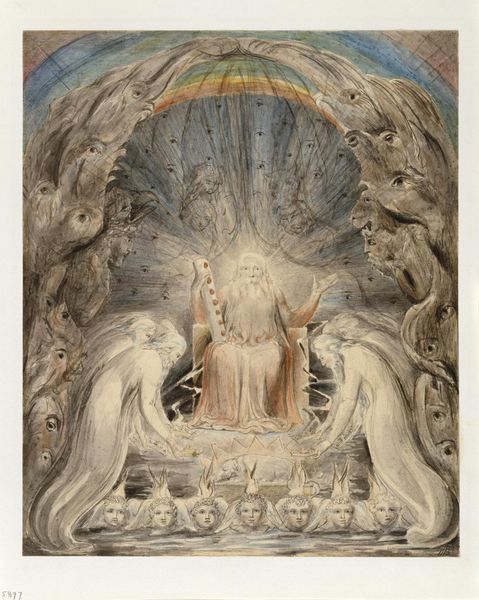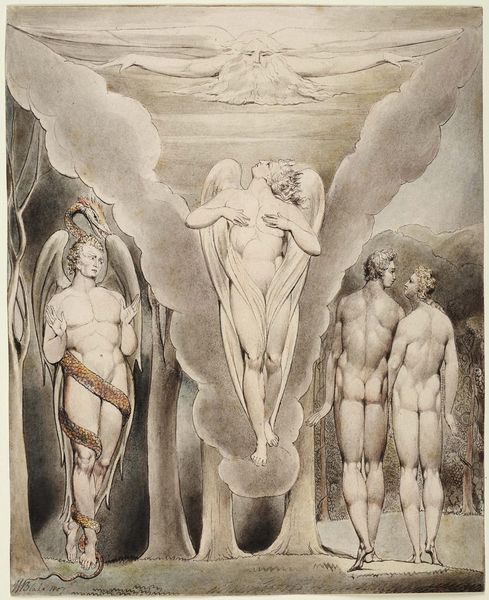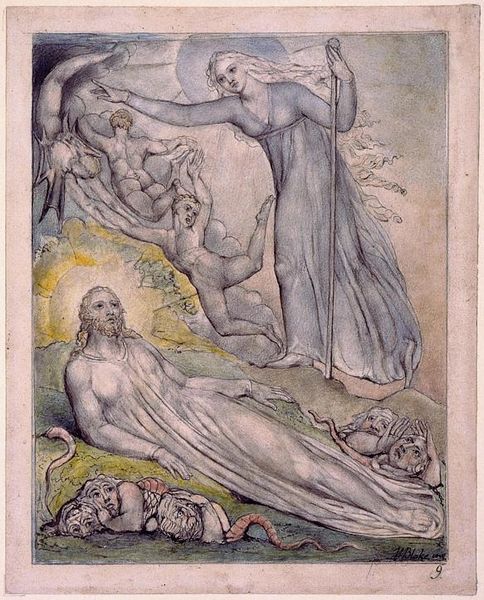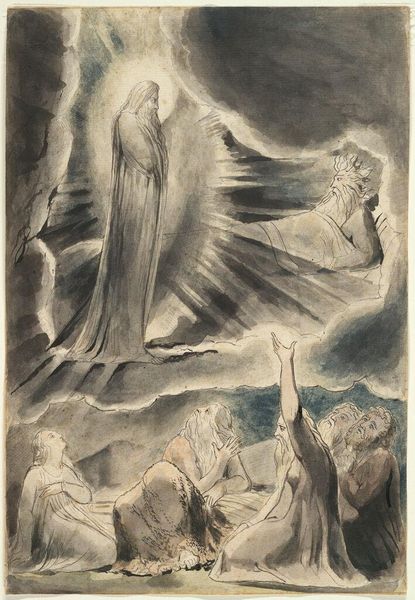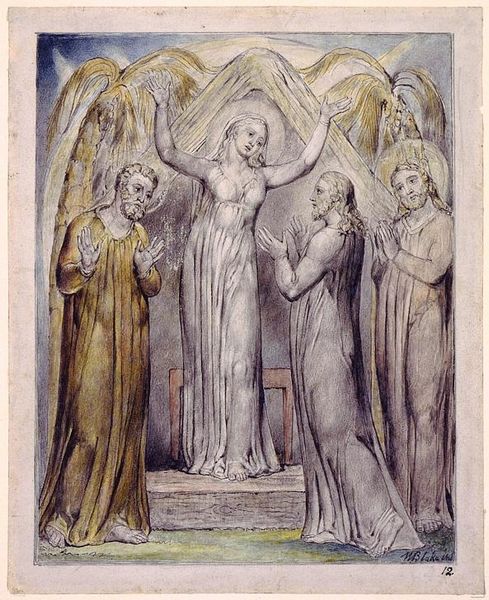
Dimensions: support: 378 x 371 mm
Copyright: NaN
Editor: Here we have William Blake's "The Death of the Virgin," currently residing at the Tate. There's something so ethereal about the scene; the colours are very muted, and the figures almost glow. What strikes you when you look at this work? Curator: Isn't it fascinating how Blake captures such stillness, a transition really, rather than an ending? The rainbow, not a storm, but a promise… What do you make of the Virgin Mary appearing twice, both dying and ascending? It's as if Blake is collapsing time itself, isn't it? Editor: Yes, it’s like he is showing two states at once, maybe the spiritual and the earthly? Curator: Precisely! It makes you wonder, doesn't it, if death is truly an ending, or merely a doorway we step through? Blake certainly offers a beautifully hopeful perspective. Editor: Definitely food for thought; I'll be pondering that for a while.
Comments
tate 7 months ago
⋮
http://www.tate.org.uk/art/artworks/blake-the-death-of-the-virgin-n05899
Join the conversation
Join millions of artists and users on Artera today and experience the ultimate creative platform.
tate 7 months ago
⋮
This is one of many watercolours Blake made for his most important patron, Thomas Butts. It was painted during Blake's stay in Felpham, Sussex when, in his own words, he put himself 'back as if I was a learner' and gave 'two years to the intense study of... light & shade & colour.' By comparing this work with the earlier temperas Blake painted for Butts, some of which are shown in this room, we can get an idea of the improvements Blake was aiming at in his art: a renewed power of design (seen in the symmetrical composition with its energetic, flowing outlines), dark shadows rejected in favour of more uniformity between light and shade, and greater radiance in his colours. Gallery label, August 2004
